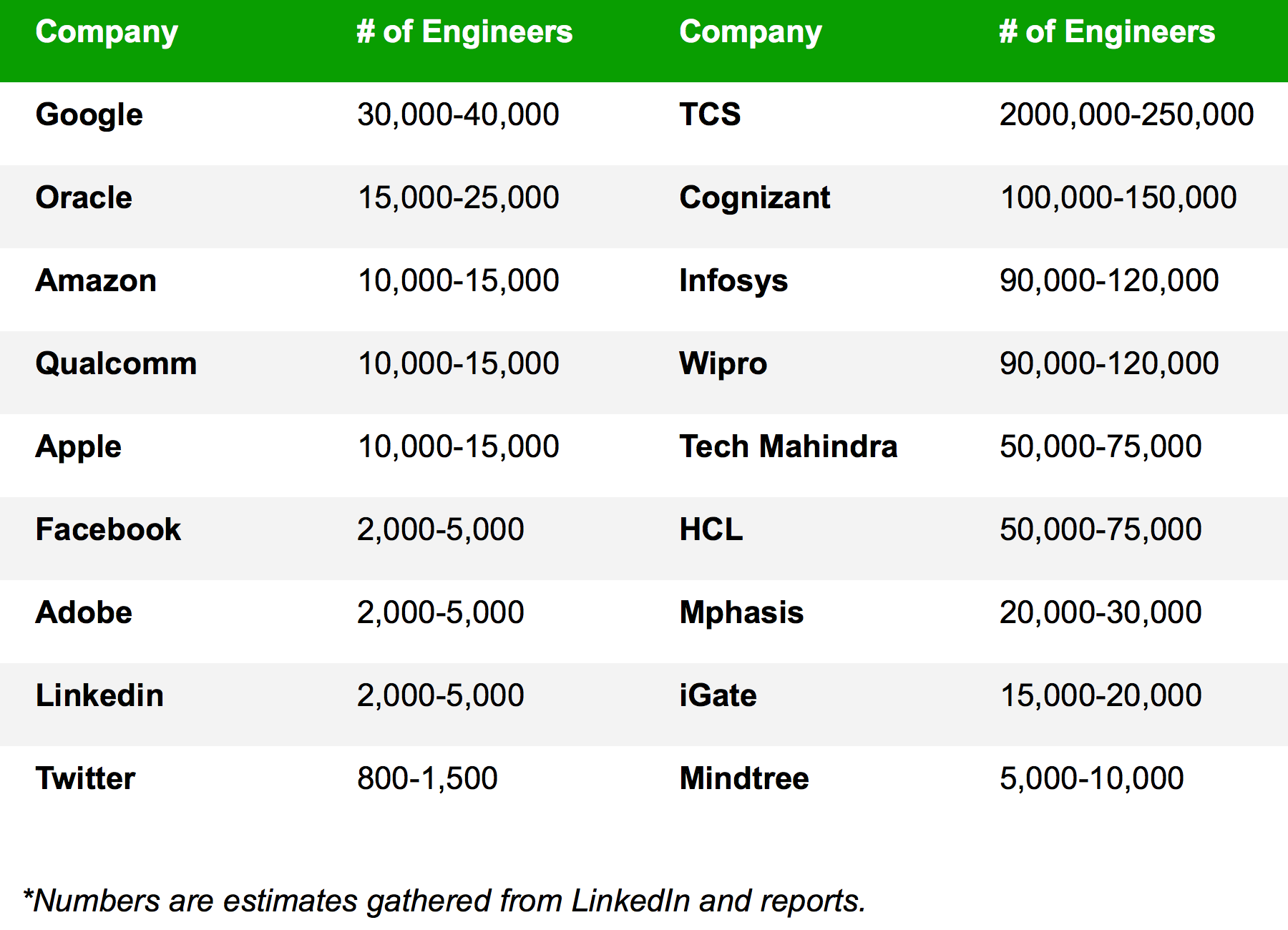Editor’s note: Pratham Mittal is the cofounder of VenturePact, a marketplace that helps companies hire pre-screened software development teams.
What are the five biggest tech employers in the world? I conducted a survey of some tech entrepreneurs and interestingly, almost everyone guessed wrong.
If you guessed Apple, Google or Amazon, you’re wrong — and by a huge margin. These companies have approximately 5K-35k developers, almost 10 times fewer than the real behemoths: TCS, Infosys and HCL.

These are big consulting firms, mostly based in India, that power the back offices of most big corporations and handle things like server maintenance, quality assurance, ERP implementations, support, etc. Most of these companies were founded in the 90s, but they really grew during Y2K when jittery companies outsourced their maintenance.
Around one-half of the world’s 11 million professional developers probably work at one of these consulting firms. But since we don’t have Aaron Sorkin writing movies about them, we don’t know much about them. Yet, if any of us have filed an insurance claim or used an ATM, chances are that we have been touched by them quite profoundly.
This breed of developers is nothing like what we see in the Valley. After finishing college, they start their careers at specialized training centers that these consultants run. They’re trained in programming languages, English language and support roles. This is essentially like college all over again: They have a full-fledged campus with hostels, gyms and pools; and they have to attend classes from 9-5 and even do assignments.
This usually carries on for 3-6 months, after which they are transferred to one of the development centers spread all over the country. If they’re lucky, they’re assigned a project with a client. “Lucky” because over 30 percent of the engineers remain “on the bench.” These consultancies usually have to have a third of their engineers on the bench for contingency or for new impending projects. It’s not unheard of to be on the bench for months (or even years) at a time, endlessly hoping for a project to come by.
When they are finally staffed, the engineers have a mixed experience. Sometimes, the projects are challenging and require some level of problem-solving, but every so often I hear about a manual testing or client support project that gets very monotonous and frustrating. This, among other things, explains the high rate of attrition at these consulting firms that can get as high as 15-20 percent.
These consultancies enforce a strict Internet firewall in their offices. They usually block access to Facebook, Twitter, etc., because they want the engineers to focus. Some employers even monitor the workstations to track an employee’s work. At one of the companies, the time they don’t spend on their systems is actually deducted from attendance.
Engineers have to mark attendance and log hours; and they have to maintain good numbers in order to be considered for promotions. In one of the companies they have to clock an average of 9.15 hours per day over the year. If they don’t clock a minimum of eight hours a day, they’re considered absent and their salary is deducted. In another, if they lag 100 hours, 11 days of leave are deducted.
The way funding rounds or acquisitions mark important milestones in a developer’s life here, getting selected for an onsite project is one of the most celebrated milestones in these engineers’ careers. An onsite project is when they get to work from the client’s office. This usually required them to relocate internationally, which also comes with a higher salary. Oh and by the way, only the top performers with great attendance records and high utilization get selected for an onsite project.
These consultancies have created a somewhat complex organizational hierarchy with many levels that an engineer can traverse through his or her career. This allows for frequent promotions, so that one always has a clear goal to pursue. There can be as many as 20 tiers between a fresh graduate and a VP.
Obviously, the work culture at these IT consultancies is very different from that of Google, Dropbox or other startups here in the U.S., and perhaps many of us will judge this sort of a culture to be regressive and damaging. But we have to understand that culture is very different in India compared to the Valley. Things that we cringe at are quite customary and acceptable in India. For example, attendance, employers monitoring Internet activity and having a firewall is quite common in India. So when these consultancies do it, the fresh engineers are not all that shocked.
And while time logging and attendance may seem like a counterproductive practice for engineers, it might just be something you need to effectively manage 200,000 engineers. Our industry doesn’t really have any alternative models (or even an example) that we can look up to for managing such a ridiculously large employee base. Perhaps if Google were to scale to 200,000 engineers, even they may too have to succumb to similar practices.
Or conversely, these consultancies might find out that they can increase employee productivity and happiness by being more flexible, open and eventually adopt more Valley-like practices.
